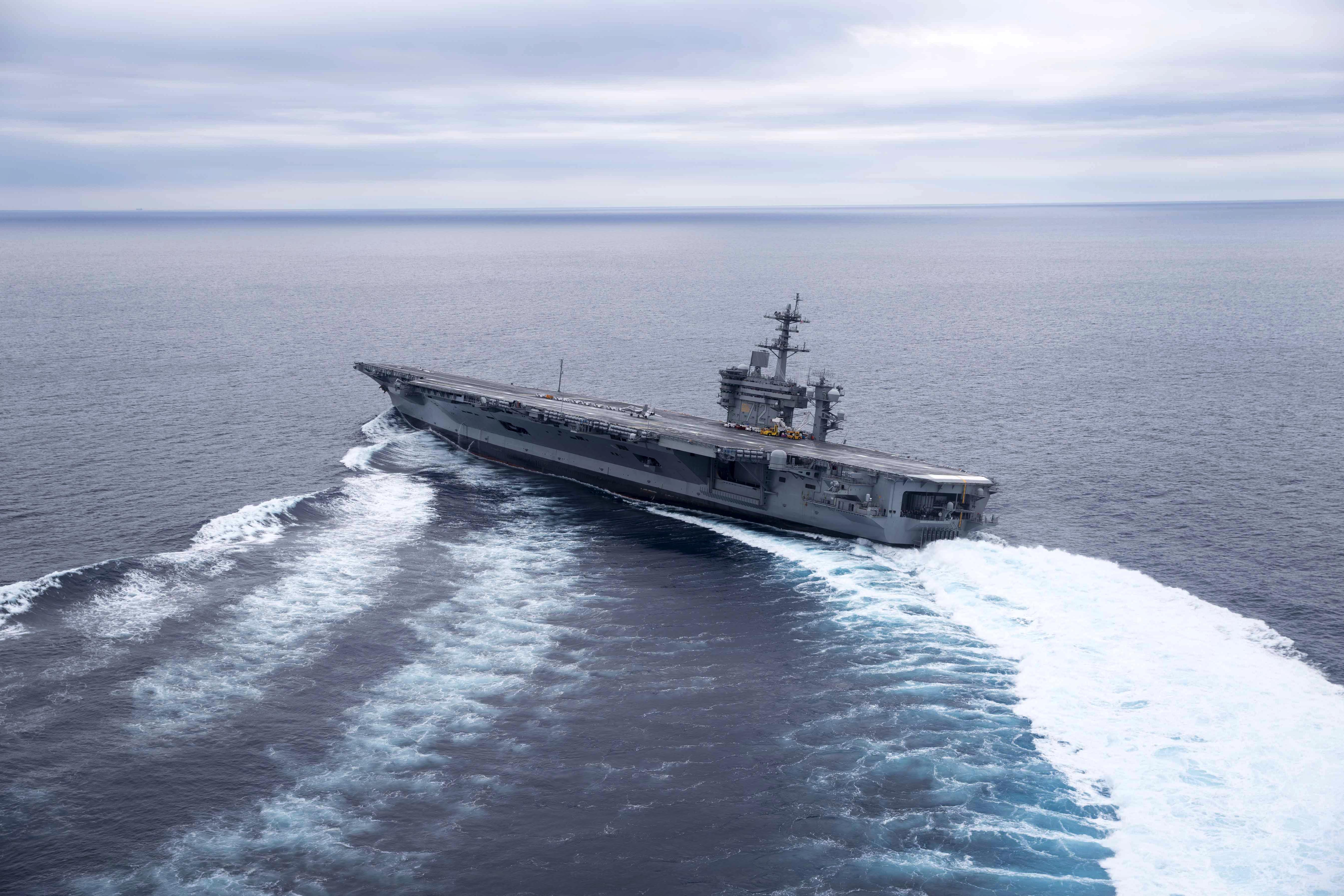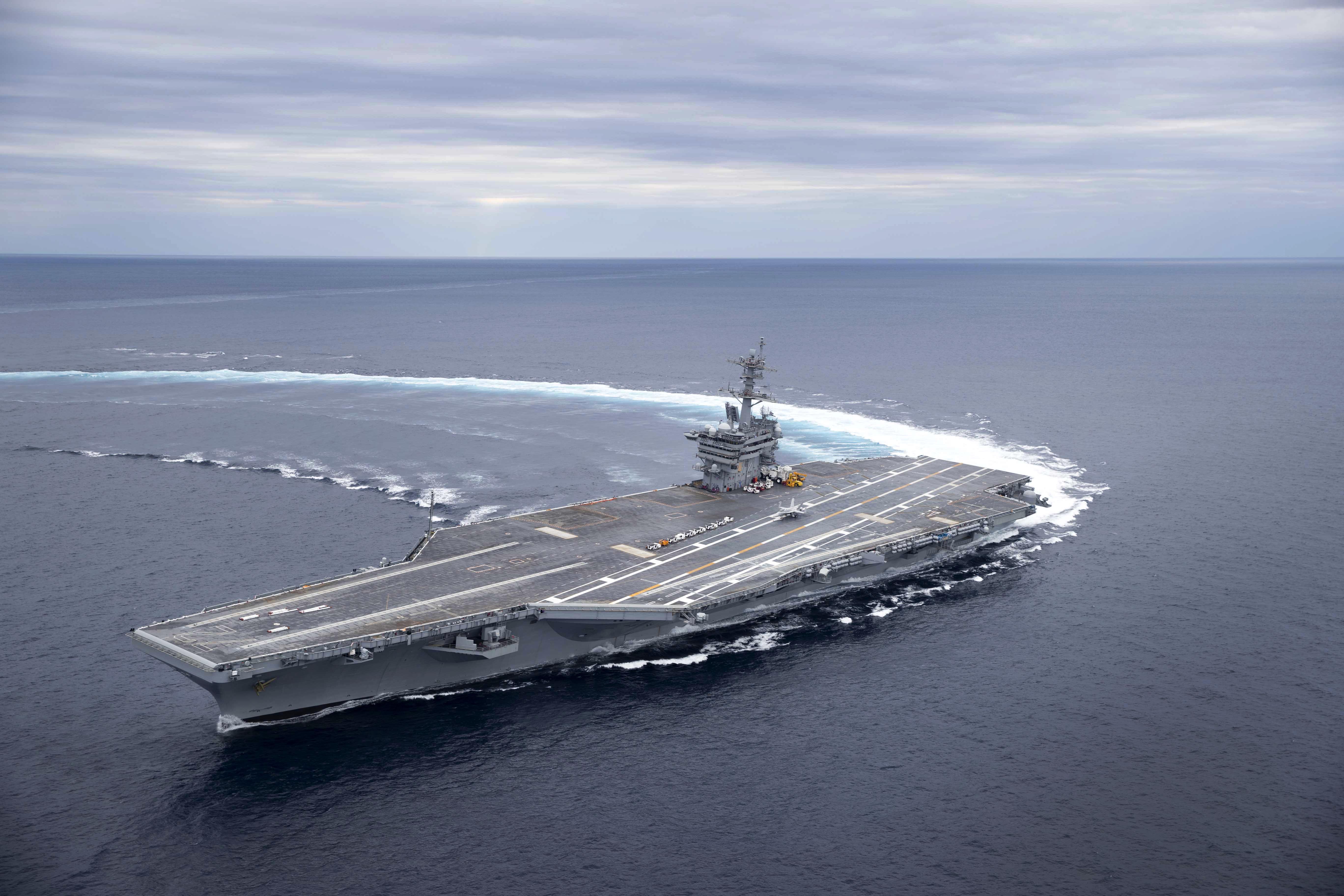
Newport News Industries redelivered nuclear-powered aircraft carrier USS Abraham Lincoln (CVN-72) to the U.S. Navy after completing the carrier’s four-year mid-life Refueling and Complex Overhaul.
The aircraft carrier was redelivered on May 12, after four days of sea trials that tested the ship’s systems and ensured the carrier was ready to resume training and deploying. The Nimitz-class carriers are built to last 50 years, with an RCOH halfway through its service life to refuel the nuclear power plant, replace the flight deck and modernize computer and warfighting systems throughout the ship. Lincoln’s midlife RCOH is the fifth one, all completed by Newport News Shipbuilding on Nimitz-class carriers – with the nuclear-powered ex-USS Enterprise (CVN-65) having gone through several smaller RCOHs during its service life.
“The successful completion of sea trials and redelivery of the ship to the Navy is the culmination of over 48 months of teamwork between Newport News shipbuilders, the CVN-72 crew, our government partners and all of our suppliers,” Chris Miner, Newport News’ vice president of in-service aircraft carrier programs, said in a company news release.
“The completion of the refueling and complex overhaul returns a fully recapitalized ship to the fleet, ready to support any mission and serve our nation for another 25 years.”
Lincoln’s RCOH began in March 2013 and has included more than 2.5 million man-hours of labor, according to a Navy news release. Upgrades include repairing, replacing and modernizing tanks, the hull, shafting, propellers, rudders, piping, ventilation, electrical, combat and aviation support systems. Workers also defueled and then refueled the ship’s two nuclear reactors. At the height of the work, 4,000 shipbuilders at Newport News were assigned to the Lincoln RCOH.
“Every Sailor, shipyard worker and contractor involved with RCOH and redelivery should be standing tall as we bring this mighty warship back home to Norfolk and put her back into service for the U.S. Navy,” Capt. Ronald Ravelo, Lincoln’s commanding officer, said in the Navy news release.
“Getting Lincoln back into the fight was truly an all-hands effort, and I could not be more proud of the crew who helped make that happen.”

For the past year, the Navy was effectively fighting with eight carriers in the fleet. USS George Washington (CVN-73), which will begin its RCOH this summer, has been sidelined since December 2015, awaiting its turn at Newport News. GW had been the forward-deployed carrier in Japan and was part of a three-way carrier swap leading up to its RCOH, which was scheduled to begin in Fall 2016. Since then, as it awaited its RCOH, GW has not had the fuel to conduct another deployment but rather has supported pilot training and special testing, including for the MAGIC CARPET carrier landing system, in local waters.
With Lincoln’s return to the fleet, the Navy will have nine in its training and deployment rotation. GW would return to the fleet in 2021, and the newest aircraft carrier, Gerald R. Ford, will deliver to the Navy soon and commission later this year but likely won’t go on its maiden deployment until 2021 as well.





